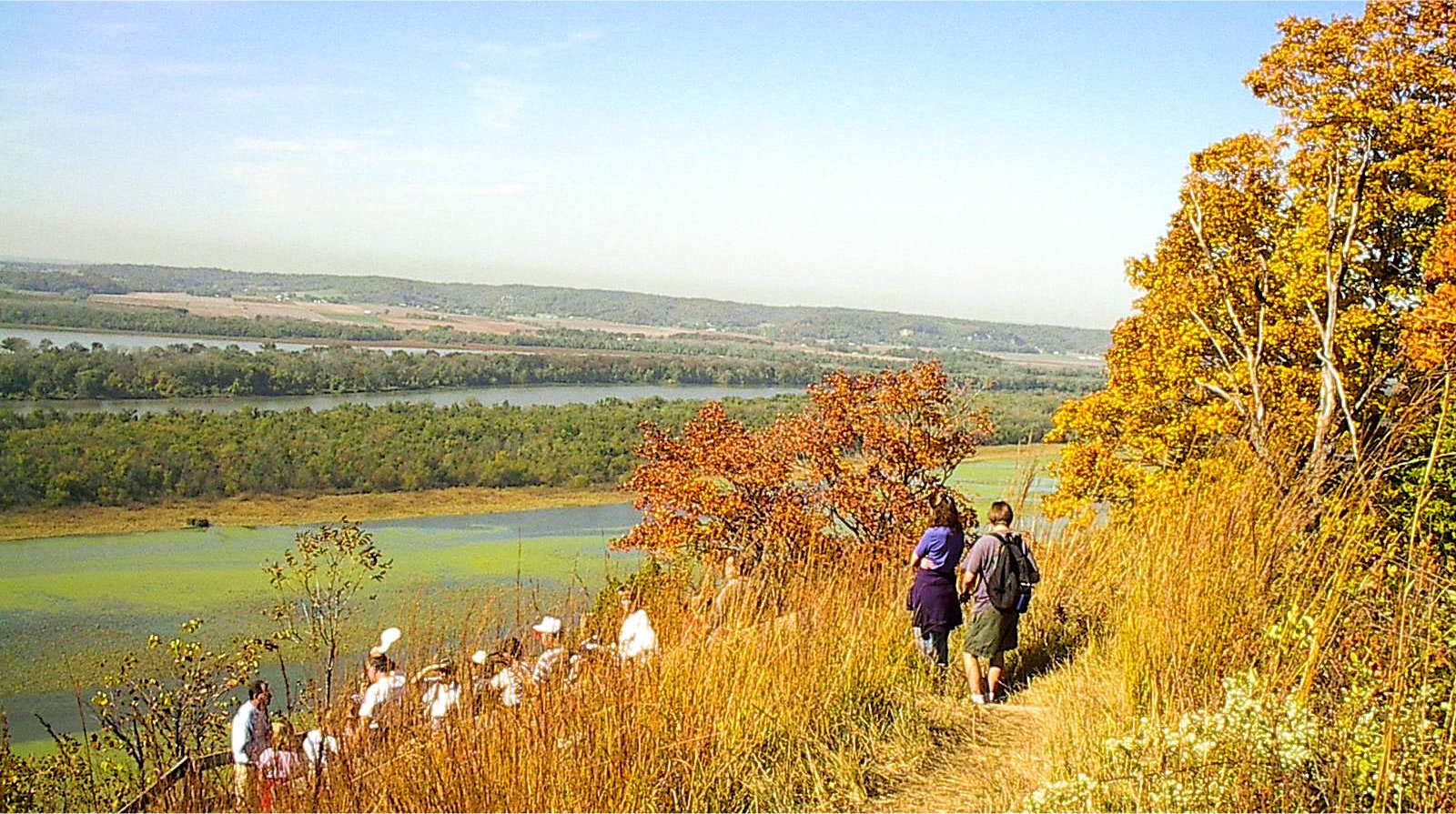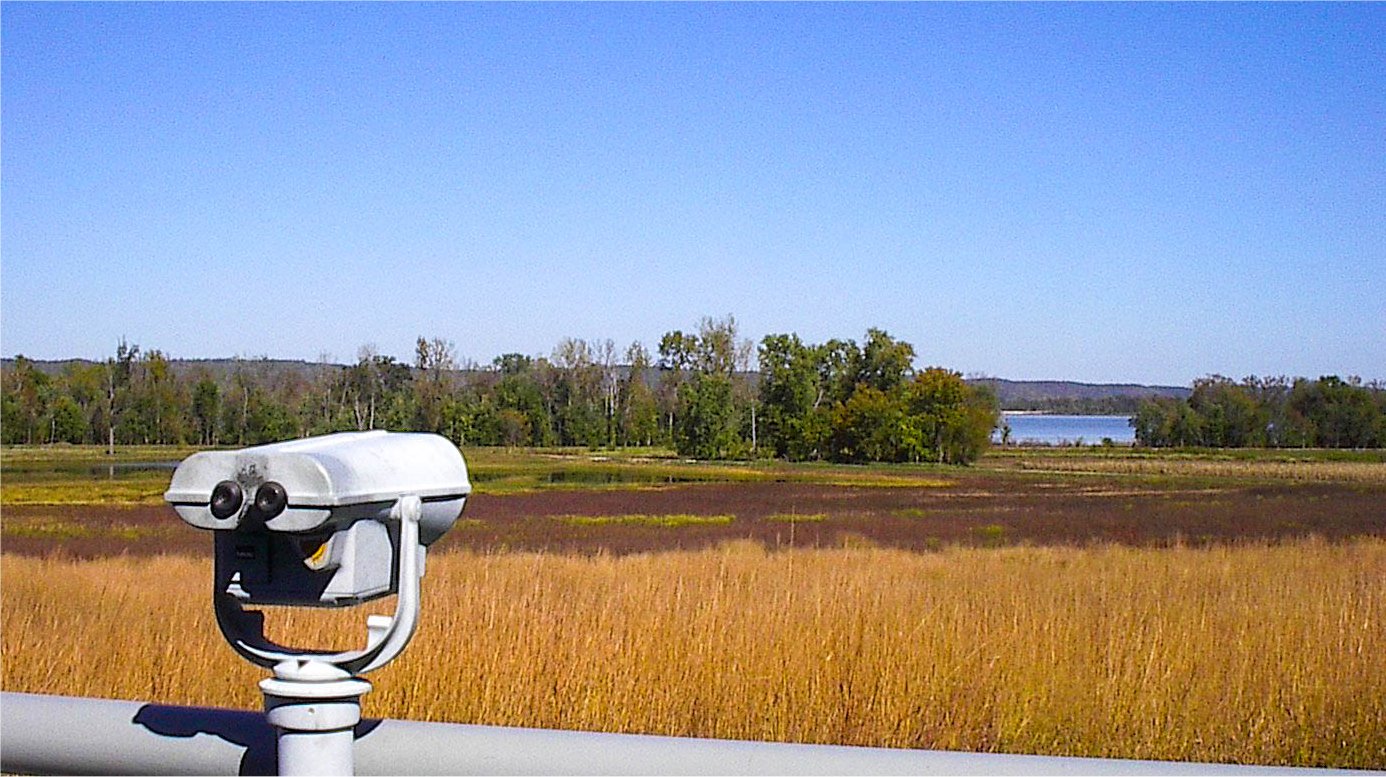Controlled burns rejuvenate the prairie ecosystem and were a natural occurrence in the past.
Hill prairies once dominated the land leading to the bluff tops at Pere Marquette State Park and fire was a friend to this ecosystem. Trees and shrubs are vulnerable to fire because they have living tissue above ground while most prairie plants are deep rooted perennials that go dormant in the autumn and winter months leaving only dead, extremely flammable tops. When a fire occurred it would kill encroaching trees and other woody growth and eliminate the accumulation of dead leaves and stems of prairie plants, thereby helping the prairies to flourish.
Fires could occur naturally with events such as a lightning strike or could be caused by man. Native Americans frequently used fire as a hunting technique. Using what was called a ring fire they would set the prairie ablaze and drive their prey into areas where hunters would be waiting. With the arrival of early American settlers, prairie fires were discouraged because they were seen as a threat to their farms and livestock. The prairie began to disappear, as most of Illinois was cultivated into farmland. Although known as the "Prairie State," less than 0.01% of Illinois' original 21 million acres of prairie remains.
When Pere Marquette State Park was formed in the 1930's, there still existed a large area of prairie area stretching from the Illinois River to the crests of the bluffs. Fire suppression policies were the norm for Park services until recently and this policy allowed trees and shrubs to take over. Before the formation of the Park, the terrain that the Ravine trail passes through would have been mostly hill prairie instead of the young forest that currently exists today. There have been efforts recently to restore some of the area to its original form. The Park conducts controlled burns in the area where the Ravine and Hickory Trails meet. Maintenance of this prairie area gives visitors an opportunity to experience a piece of Illinois’ past.
The Ravine Trail connects with four trails: Goat Cliff, Ridge, Hickory, and Hickory South.












